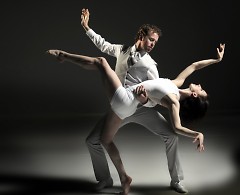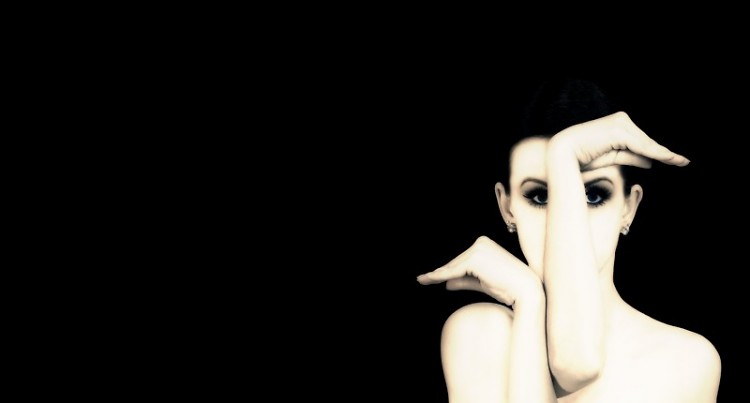The Grand Rapids Ballet is showcasing a modern interpretation of the 100-year-old classic “Black & White: Swan Lake” at Peter Martin Wege Theatre February 10-12, 2017. This performance was choreographed by Mario Radacovsky, a Czechoslovakian-born dancer turned choreographer who based this rendition on a very personal life experience.
Radacovsky was diagnosed with cancer and captures his internal battle with this disease in the polar extremes of this performance. “It talks not necessarily about the cancer but about being ill and what it means to be ill, and how much that experience changes your life. And that experience changed me completely,” states Radacovsky. “In the classical version everything is about the lady, the lady is important of course. In my version as well the lady is very important but then the perspective is of the prince, from the gentleman’s side, like how he feels about all the changes that have happened just to him just suddenly. It’s like life; in the split of a second your life can be changed. When they told me that I’m diagnosed with the cancer they had no idea which kind of cancer or how much time I have left.”
Radacovsky explains that he chose the title “Black & White” to highlight the polar extremes of this performance and the turmoil associated with his battle with cancer. “It’s all about extreme. Full commitment to the aggression, full commitment to the fragility. Full commitment to the love, full commitment to the hate. In our society black and white are considered polar opposites, though in reality there are a whole bunch of shades of gray in between,” explains lead male dancer Nicholas Shultz about his perspective on the performance. Radacovsky challenges the traditional western association of white being “pure, beautiful, untouched," and explores the ambiguity of meaning colors can take for different people based on their life experiences or their culture. “Being in the hospital the color white became dangerous to me,” Radacovsky explains about the association that developed between the color white and the sterility of the hospital walls and doctor’s coats.
Radacovsky goes on to explain the prominent role that mirrors take in the performance as being that of self-reflection. He explains that when he was in the hospital battling cancer he lost his hair along with 40 percent of his muscle mass. Though he didn’t feel any different on the inside he could see the change in his external appearance reflected in the reactions of friends and family who came to visit him. “It’s beautiful to see when Laura and Nick and others portray the characters - basically me and my ex-girlfriend or my wife in a certain sense, yes - but when people see it's just a simple woman with the man next to each other and they don’t understand each other in certain ways, and in certain ways they love each other so much, and in certain ways they try to rebuild their relationship based on that certain experience that the one person had.”
The lead roles are danced by Nicholas Shultz and Laura McQueen Schultz, real life married couple who have been with the Grand Rapids Ballet Company for over a decade each. They explain that Radacovsky adapts the choreography to fit the dancers in each performance. The Schultz’s emphasize that the key to being successful at interpreting these roles is to focus not just on technique, but on the heart of the performance. Nicholas Shultz explains that when on stage there are three walls: the two sides and the back of the stage, and the front where is audience sits is called the fourth wall. “A true honest performance will break that fourth wall so you’re not dancing as if you are just doing it with a mirror, it’s to reach out and include the audience and make them feel like they’re a part of what we’re doing without looking at the audience. What’s interesting about this piece more than any other is that we are actually interactive with the audience in the sense that we dance in front of the curtain and I walk literally in the realm of the audience. I sit and I stare at the audience and it’s...you know Mario talked a lot about when he was creating this about the idea of in a sense stuff can be happening to you as a person and society and culture and everything around you can be going on as if nothing has changed. So it’s the sense of being still and looking while all this other stuff is happening while not being able to have this sense of interaction.”
Schultz, McQueen Schultz, and Radacovsky emphasize that the audience’s openness to the performance will have a significant impact on their experience. “You have to be willing to lose yourself in what you're seeing. Watch and let yourself be taken somewhere or find the parallels you can relate to or you might as well just be watching a picture or watching TV,” Schultz finishes.
This work was created in West Michigan and originally premiered as a part of the Grand Rapids Ballet’s 2011-2012 season. Original costumes by Artistic Director Patricia Barker, and special effects by Creative Director Michael Auer.
The Rapidian, a program of the 501(c)3 nonprofit Community Media Center, relies on the community’s support to help cover the cost of training reporters and publishing content.
We need your help.
If each of our readers and content creators who values this community platform help support its creation and maintenance, The Rapidian can continue to educate and facilitate a conversation around issues for years to come.
Please support The Rapidian and make a contribution today.


